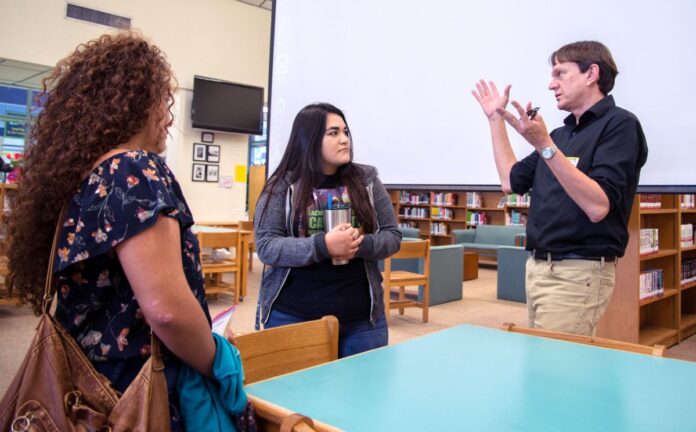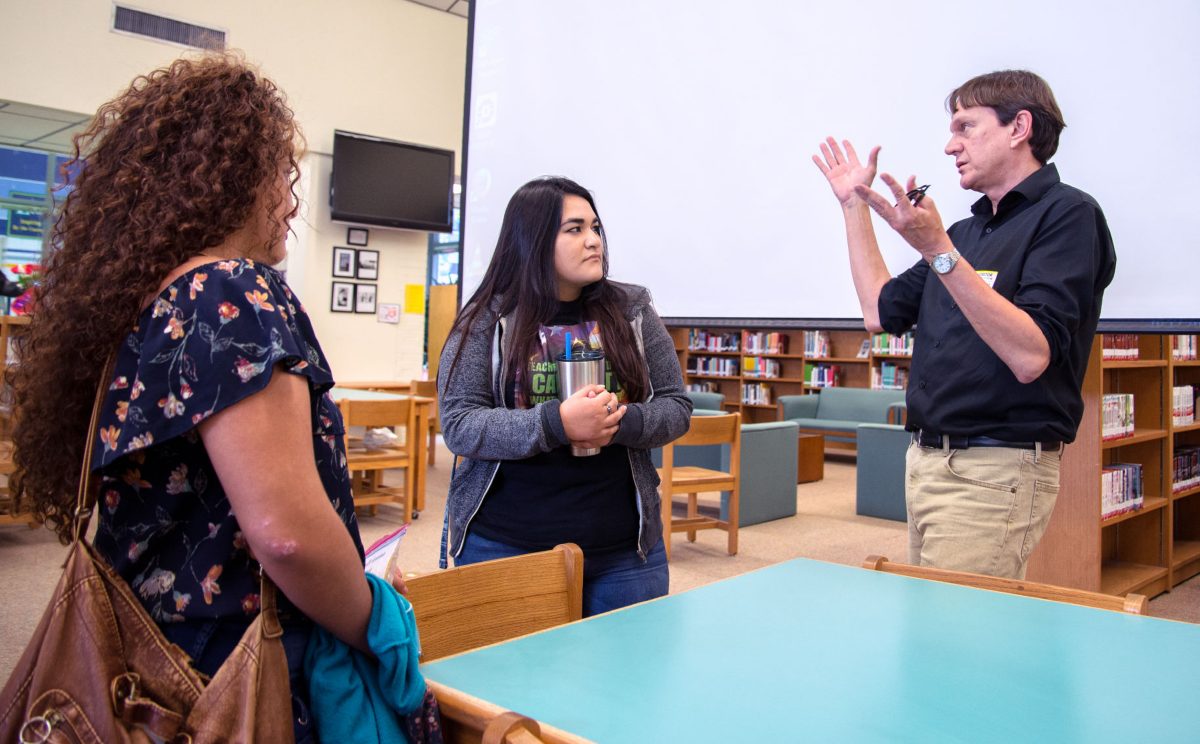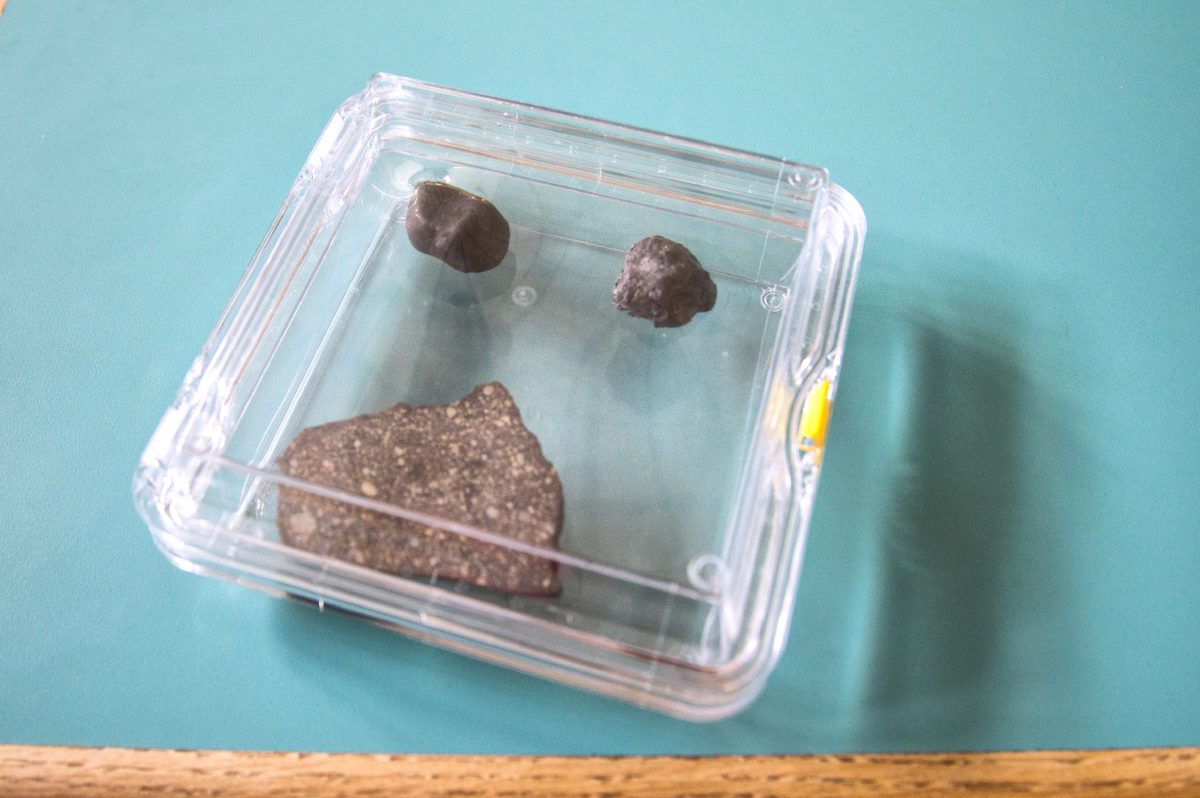SAN BENITO — Every day, meteorites fall to Earth. Asteroids pass by Earth all the time.
NASA scientist Dr. Michael Zolensky’s job is to locate where asteroids that might threaten Earth are.
Yesterday, Zolensky, a Cosmic Dust, Space Hardware and Stardust curator, and his colleague Dr. Dean Muirhead, an engineer with the Advanced Life Support Lab, gave students an overview of what they do with NASA and the Lyndon B. Johnson Space Center in Houston.
They have different jobs, making for an interesting conversation with the students in the science, technology, engineering and math program at San Benito High School.
While Zolensky discussed asteroids and falling rocks, Muirhead discussed sending water up to the International Space Station.
The scientists will also serve as grand champion judges for this weekend’s 57th annual Rio Grande Valley Regional Science and Engineering Fair in Brownsville.
As a curator and geologist, Zolensky and his colleagues are charged with protecting, preserving and distributing samples for study from the moon, Mars and interplanetary space in support of solar system exploration. These sample collections include lunar rocks and loose material returned by the Apollo missions and dust particles collected from the stratosphere.
The collection also includes solar wind samples, recovered meteorites, space-exposed surfaces retrieved from satellites or spacecraft and samples collected from comets and the interstellar dust stream.
Zolensky said he wanted to be a scientist since he was 8 years old. He never changed his mind.
He has looked for asteroids all over the Earth, from North Africa to Antarctica.
For STEMS Sponsor Mary Maney, the discussion’s goal was more about piquing the student’s interest.
“I want them to realize where they can go with some of their interest,” she said. “It doesn’t have to be just about academics. If at least two of them change their mind, then I’ve done my job.”
Both scientists would agree because they too have made a career out of personal passions.
“Keep taking science courses,” Zolensky said to the students. “Be curious of what’s going on.”
Zolensky told students they don’t have to decide early on what they want to do.
“You just have to really want to do it and you can,” he said.
As the discussion went on, the topic soon changed to urine or rather the ability to recycle urine for water.
Muirhead, who has devoted his whole life to the study of water, works in the water reclamation unit of the Advanced Life Support Lab. There, he and his team members test and develop experimental conservation technologies, including a processor that recycles urine into drinking water to be used in future space travel.
“Where people see a liter of urine, I see a water supply,” he said. “One kilogram of water costs about $30,000 to send to the space station.”
People forget that every water molecule they drink has, at one time or another, been part of some stage of numerous organisms’ life cycles, Muirhead said. The water that has been recycled is no different than water that comes from the faucet.
Muirhead, who said the future is in alternative engineering, encouraged students to find their passion and spend the rest of their lives applying it in a creative way.
“Don’t get pulled back by the obstacles in the road,” he said. “If you are curious, go into science. If you want to solve problems, go into engineering.”
• There are more than 40,000 meteorites in Antarctica.
• An asteroid’s orbit is controlled by the orbit of Jupiter.
• With telescopes, scientists can calculate where asteroids will be years from now.
• Tracking asteroids costs NASA lots of money.
• The water found in some meteorites is 4 1/2 billion years old, as old as the solar system.
• Meteorites also contain organic molecules that were formed billions of years ago, leading scientist to believe there could actually be life on other planets.






